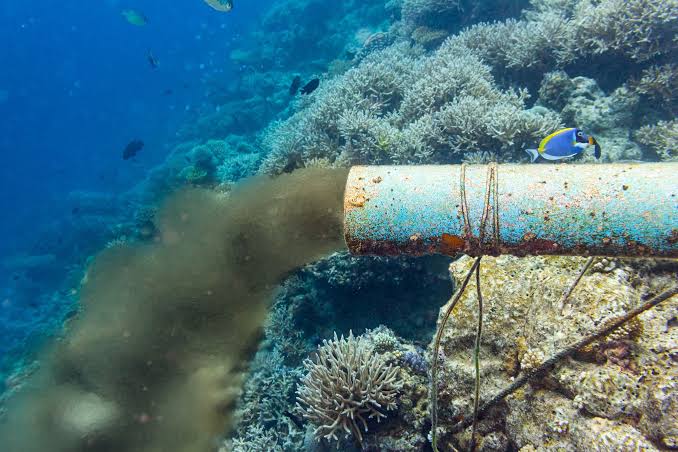Biodiversity is the pillar that allows ecosystems to function and humans to thrive. Without biodiversity in an ecosystem we would not have the many plants and animals we find in our world today, including us. Biodiversity is the “biological diversity in an environment as indicated by numbers of different species of plants and animals.”
This includes the number of different species and genetic variation within the same species. The different plants and animals in an environment work together to maintain balance in the ecosystem [1]. These interactions create functioning systems that provide food, medicine, and new technologies for us. Unfortunately, as we have spread across the globe we have disrupted and destroyed many ecosystems by reducing their biodiversity. This damage can be seen in many places, like reduced crop yields in developing countries and the increasing rate of animal extinction.
Why is Plant diversity is important?
Plant diversity is important for many reasons and they can be generally divided into two categories: the importance for ecosystems and for us.
Biodiversity is what allows ecosystems to work and flourish. Over millions of years many different species of plants and animals have come to live in the same habitats. Over time they balance each other and hold the ecosystem together. When a species is removed (biodiversity is reduced) the ecosystem can lose its balance, causing it to break down.
One iconic example of this is sea otters in kelp forests along the California coast. Sea otters feed on sea urchins and sea urchins feed on kelp. If sea otters are removed sea urchins multiply, eating large portions of the kelp forest, destroying the habitat and eventually leading to the death of other animals that live there. The whole ecosystem falls apart.
Having a large biodiversity protects against a situation like this and makes ecosystems more resilient to change. In short, biodiversity maintains the balance of an ecosystem to keep them functioning and self-regulating.
For us biodiversity provides billions of dollars’ worth of resources, which we call ecosystem services. These services are separated into three types:
- provisioning services
- regulating services
- cultural services
Provisioning services encompass anything relating to the production of renewable resources, like farming or energy production. In farming having a larger biodiversity of crops reduces the risk that they all die from the same weather event or disease. This increases the overall yield and protects the farmer.
Regulating services refers to anything that lessens environmental change. Maintaining biodiversity of tree species in a forest increases the amount of trees that grow there. Having more trees means they absorb more CO2, helping contain climate change.

Cultural services are anything that we get direct value or enjoyment from. This can be any type of outdoor recreation.
Biodiversity has played an important role in creating the planet we live on and continues to help us improve our lives. So, the real value of biodiversity is beyond anything our mind can even imagine.
How we can protect biodiversity
Even though the biodiversity of many habitats has become threatened there are many things we can do to help reduce this danger. These are some of the steps you can take to conserve biodiversity.
#1 Government legislation
Governments have the power to control what is done to the habitats within their country. Legislation that protects natural habitats by outlawing development, harvesting of natural resources, or other human exploitation has a huge impact on maintaining natural biodiversity.
Additionally, laws protecting specific species like the USA’s Endangered Species Act helps protect animals that have already been impacted [4].
Protecting habitats before they have been altered is the best form on biodiversity conservation and is most successfully implemented by government regulations.
2 Nature preserves
Nature preserves are a form of government regulation and are often known as National Parks. They protect a region and the organisms that live there from certain forms of development and provide access for people to visit them. This is excellent because it protects the natural habitat and is a place where people can view the ecosystem.
The goal is that over time this helps people have more respect for the natural world and increases pressure on government to further protect other areas.
3 Reducing amount of invasive species
Invasive species are sometimes introduced to an area on purpose, but also sometimes by accident. To limit the number of invasive species moved by accident planes, ships, and cargo must be thoroughly checked before it is offloaded in a new country.
Additionally, people should not bring new species of animals or plants to an area without consulting ecologists knowledgeable on the region.
5 Captive breeding and seed banks
Captive breeding is when animals in captivity (often at zoos) are bred. This is seen as somewhat controversial, as it requires the capture of animals that are often near extinction. On the positive side it provides the opportunity to increase the population of the species, so they can be reintroduced into the wild [4].
Seed banks are areas where huge varieties of plant seeds are stored. This provides a failsafe if a species goes extinct in nature. The plant can be grown from a saved seed and reintroduced back into its habitat.
This is a very real issue and seed banks have been collecting samples for many years, with some seed banks having over 2 billion seeds stored at a time [8].
#6 Research
Understanding how species interact within their environment is crucial to protecting them. As humans further understand species interaction we find new and more direct ways to help protect organisms and maintain biodiversity.
One example is the use of wildlife corridors in urbanized areas. By researching many different species we have found that this dramatically increase their populations [9]. It reduces the number of animals that come into direct contact with humans and provides areas for migratory animals to move long distances.
#7 Reduce climate change
As we know, climate change has disastrous consequences for all living things on earth. We use huge amounts of fossil fuels, which directly cause climate change.
We need to move away from fossil fuels and towards alternative energy sources and natural or sustainable products. Reducing the effects of climate change requires a worldwide effort.
#8 Purchase sustainable products
Many protects are now labeled with ecolabels that state if they are environmentally friendly. Some of the most prominent ecolabels are Energy Star, USDA Organic, and Rainforest Alliance Certified [5].
Our consumption of natural resources is one of the main reasons for biodiversity loss, so it is our responsibility to consume products that are produced in the most sustainable way possible.
Additionally, when we consume these goods it increases demand for environmentally conscious products pushing more producers to make them.
#9 Sustainable living
Sustainable living is something that we can each choose to do on a daily basis. Whether it be by taking shorter showers, riding a bike to work, or buying ecolabeled products it helps reduce the amount of resources we use.

This is arguably the most important way of protecting biodiversity because everyone can do it, often with only small lifestyle changes. If everyone chose to live sustainably, biodiversity in a variety habitats would improve.
#10 Education
As with most environmental topics, education is one of the keys to success. Educating people about the importance of biodiversity conservation increases public awareness of the issue. As public awareness increases people become more involved and eventually influence their government representatives, pushing for more environmental protection.
Government legislation protecting our natural environments is one of the most effective ways of protecting biodiversity.
11. Habitat restoration
After an area is damaged by human impacts we can try to return it to its natural state. This means bringing back the plants and animals that are naturally found there. This has been shown to be a promising way of returning biodiversity to a region.

One example of this is the reintroduction of wolves into Yellowstone National Park. When wolves returned to the region they ate more elk and coyote, which increased the prey species of the coyote and let riparian (river bank) areas trampled by elk recover [4].
These restoration projects can be undertaken by governments, local organizations, or NGOs.
The role of science and technology in conserving biodiversity
As our society develops we continually use more resources, which stains natural biodiversity, but development also leads to improved science and technology.
We use science, and specifically ecology, to understand the web of interactions in our biomes. By understanding these interactions scientists are able to pinpoint the key species in ecosystems. This information is used to guide conservation efforts.
It is also used to understand pollution and its cascading effects within an ecosystem. Bio-magnification of toxins in a food chain can cause huge problems for top predators. This is an ever adapting field of science and these two examples are just a few ways to implement the information it uncovers [10].
Technology is becoming more and more important in conservation biology. Sustainable technologies, like renewable energies, biodegradable packaging, and recycling, help reduce our impact on the environment.
Additionally, technologies like cloning give scientists the ability to bring back species that are already considered extinct.
Biodiversity in natural ecosystems is of the utmost importance. It helps provide the resources and services that we rely on every day. The development and urbanization of humans poses a serious risk for natural biodiversity.
If nothing is done to reduce these changes, there will be disastrous consequences. There are many things we can do in politics, science, and even in our daily lives to help fix these issues. As humans we need to understand the risks associated with our consuming lifestyles and work hard to fix what is already damaged and prevent future harm.
The time has come for us to unite and save biodiversity.



























